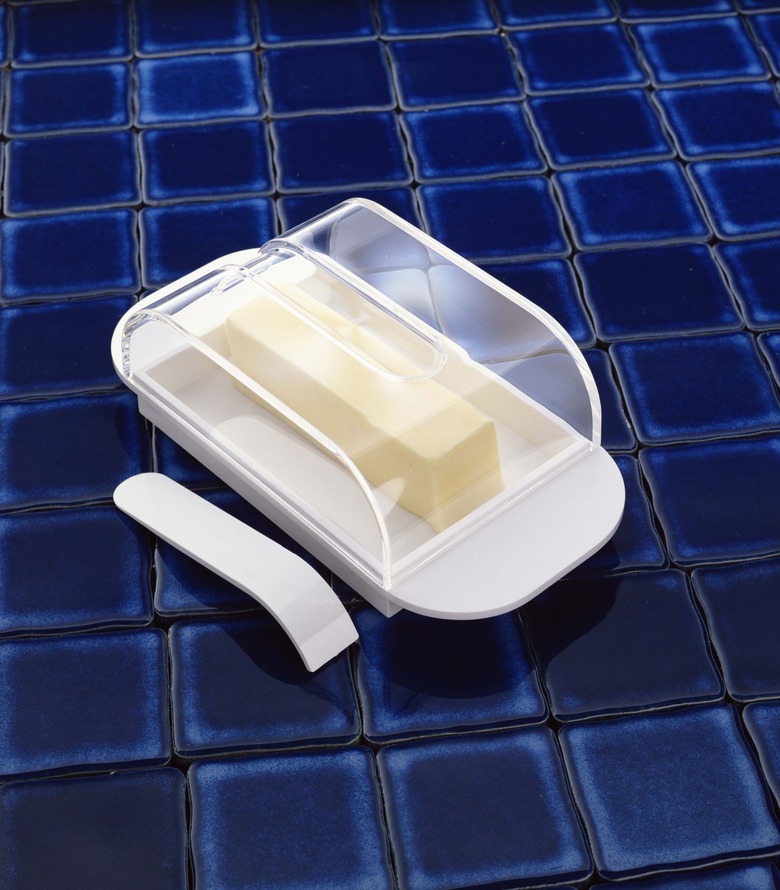Defining Characteristics Of Lipid Molecules
Lipids are one of four classes of organic molecules. Most classes of organic molecules are simply distinguished by their structure — that is, the atoms they contain and the specific arrangement of those atoms. Lipids are additionally characterized by their behavior: they don't readily dissolve in water, but they are soluble in many organic solvents. Within that classification you can find fats, oils, waxes and several other different types of molecules.
Classification of Organic Molecules
Classification of Organic Molecules
Organic molecules are compounds composed of carbon and hydrogen, perhaps with some other atoms thrown in. They're divided into four major classes: proteins, nucleic acids, carbohydrates and lipids. Proteins, for example, are long chains of amino acids. Each amino acid is defined by the presence of a carboxyl group — a carbon, two oxygens and a hydrogen, COOH — and an amino group — a nitrogen and two hydrogens, NH2. Carbohydrates and nucleic acids are also defined by the arrangement of their atoms.
Definition of Lipids
Definition of Lipids
Lipids can be distinguished from other organic molecules based on one characteristic: their inability to easily dissolve in water. On an atomic level this is related to a condition called polarity. If the charged particles called electrons in a molecule are distributed unevenly then one part of a molecule can have a partial positive charge and another part can have a partial negative charge. Water, for example, is a polar molecule. It turns out that polar molecules mix well with other polar molecules, but don't mix well with nonpolar molecules. In general, lipids are nonpolar, which is why they don't mix well with water. There are many different arrangements of atoms that are nonpolar, which is why there are many different types of lipids with many different atomic arrangements.
Types of Lipids
Types of Lipids
Fatty acids, like proteins, have a COOH group. The COOH group is at one end of the generally long molecule, which can vary greatly in length. The hydrocarbon tails usually contain four to 28 carbons, lined up. Your body stores energy in fatty acids, but in groups of three connected through a glycerol backbone. Those groups are called triacylglycerols or, more briefly, triglycerides. Different forms of triglycerides comprise fats and oils, both saturated and unsaturated, depending on the length of and bonding within the fatty acids. Steroids, waxes and detergents are also examples of lipids. These lipids have different atomic arrangements than their triglyceride cousins. Steroids, for example, have their hydrocarbons arranged in four connected rings.
Amphiphilic Lipids
Amphiphilic Lipids
Many lipids have distinct polar and nonpolar regions. The polar regions mix well with water and are thus called hydrophilic, or water loving. Nonpolar regions don't mix with water, so they're called hydrophobic, or water fearing. When a molecule has both hydrophilic and hydrophobic sections if is called amphiphilic — or amphipathic. Soaps and detergents are amphiphilic lipids, but there's an even more important class of amphiphilic lipids: phospholipids.
When placed in water, phospholipids will arrange themselves into globules so the polar phosphate group touches the water and the nonpolar hydrocarbon chain is pointed toward the protected middle of the globule, away from water. The cells in your body all have a membrane built from two layers of phospholipids. This double-layered membrane is called the phospholipid bilayer. Without it there would be no living cells.
Cite This Article
MLA
Gaughan, Richard. "Defining Characteristics Of Lipid Molecules" sciencing.com, https://www.sciencing.com/defining-characteristics-lipid-molecules-17091/. 24 April 2017.
APA
Gaughan, Richard. (2017, April 24). Defining Characteristics Of Lipid Molecules. sciencing.com. Retrieved from https://www.sciencing.com/defining-characteristics-lipid-molecules-17091/
Chicago
Gaughan, Richard. Defining Characteristics Of Lipid Molecules last modified March 24, 2022. https://www.sciencing.com/defining-characteristics-lipid-molecules-17091/
